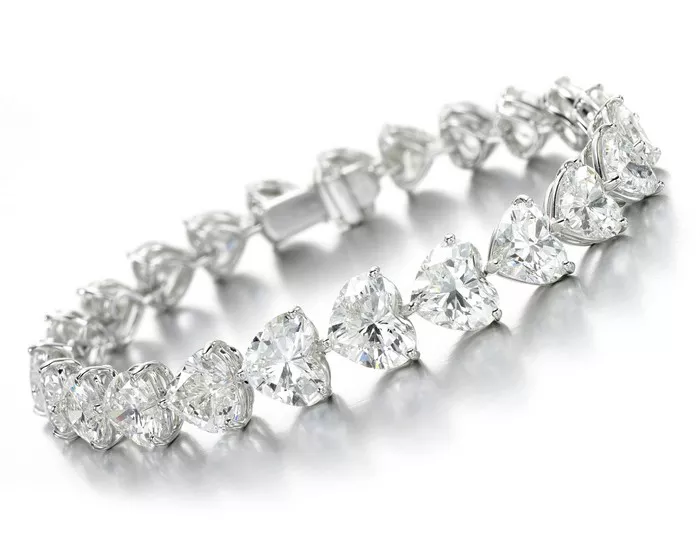Diamonds have long captivated human imagination with their brilliance and rarity. However, with advancements in technology, the market has seen an influx of synthetic and imitation diamonds. To ensure authenticity and quality, jewelers employ various testing methods. This article delves into the intricate process of diamond testing, exploring the tools, techniques, and considerations involved.
Explanation of Diamond Testing
Diamond testing is a meticulous process aimed at verifying the authenticity and quality of a diamond. At the forefront of this endeavor are diamond testers, essential tools utilized to discern genuine diamonds from their synthetic or imitation counterparts. These testers rely on fundamental principles of physics to analyze the properties of diamonds.
One of the primary methods employed by diamond testers is thermal conductivity testing. This method capitalizes on the fact that diamonds possess exceptional thermal conductivity compared to most other gemstones. A diamond tester typically consists of a probe tip heated to a constant temperature. When the probe comes into contact with a diamond, it quickly dissipates the heat due to the diamond’s high thermal conductivity, causing a rapid drop in temperature. This distinctive thermal behavior helps identify authentic diamonds.
Electrical conductivity testing is another vital technique in diamond testing. Diamonds are generally poor conductors of electricity, whereas many diamond simulants exhibit higher conductivity. Diamond testers equipped with electrical conductivity analysis assess the gem’s ability to conduct electrical current, providing valuable insights into its authenticity.
Types of Diamond Testers
Diamond testers come in various types, each leveraging different testing methodologies. Thermal conductivity testers, also known as diamond testers or diamond detectors, are prevalent in the industry. These handheld devices typically feature a probe connected to a display unit. As mentioned earlier, they operate by measuring the rate at which heat is conducted through the tested material, effectively distinguishing diamonds from other gemstones.
Electrical conductivity testers, on the other hand, assess a diamond’s electrical properties. These testers utilize a different approach, employing electrical circuits to evaluate the gem’s conductivity. By measuring the flow of electricity through the stone, they can differentiate between genuine diamonds and their substitutes.
Combination testers are increasingly gaining popularity for their comprehensive approach. These advanced devices integrate both thermal and electrical conductivity testing capabilities, offering enhanced accuracy and reliability. By combining multiple testing methods, they minimize the risk of misidentification and provide more robust results.
Accuracy of Diamond Testers
While diamond testers are valuable tools, their accuracy is not absolute, and certain limitations must be acknowledged. One challenge is distinguishing between diamonds and moissanite, a diamond simulant with thermal conductivity properties similar to natural diamonds. Traditional diamond testers may struggle to differentiate between the two, potentially leading to misinterpretation.
Furthermore, the effectiveness of diamond testers can be influenced by factors such as the quality of the testing equipment and the skill level of the operator. Subpar testers or improper testing techniques may yield inaccurate results, highlighting the importance of investing in reliable equipment and training.
Despite these limitations, diamond testers remain indispensable in the gemological industry, serving as invaluable aids in the identification and authentication of diamonds.
How to Choose a Diamond Tester
Selecting the right diamond tester is crucial for accurate and reliable results. When choosing a diamond tester, several factors should be considered:
1. Testing Capabilities: Opt for a tester equipped with both thermal and electrical conductivity testing capabilities for comprehensive analysis.
2. Accuracy and Reliability: Prioritize models known for their accuracy and reliability, preferably from reputable manufacturers with a track record of quality.
3. Ease of Use: Choose a tester that is user-friendly and intuitive, with clear instructions for operation.
4. Portability: Consider the portability of the tester, especially if you require mobility for on-site testing.
5. Budget: While quality should not be compromised, evaluate testers within your budget range to find the best balance between affordability and performance.
By carefully considering these factors, you can confidently select a diamond tester that meets your specific needs and ensures accurate diamond authentication.
Additional Testing Methods
In addition to using diamond testers, there are several at-home tests that individuals can perform to assess the authenticity of diamonds:
1. Sandpaper Test: Rubbing a diamond against sandpaper can reveal its hardness, as genuine diamonds will not scratch easily.
2. Read-Through Test: Placing the diamond on a piece of text and observing whether you can read through it can indicate its transparency, a characteristic often associated with diamonds.
3. Water Test: Dropping the diamond into a glass of water can help assess its density, as diamonds typically sink due to their high density.
While these tests can provide some insights, they are not definitive indicators of a diamond’s authenticity and should be supplemented with professional testing methods.
Professional Assessment
For a definitive certification of authenticity and quality, professional assessment by accredited gemological laboratories is indispensable. Organizations such as the Gemological Institute of America (GIA) and the International Gemological Institute (IGI) employ rigorous testing protocols and state-of-the-art equipment to evaluate diamonds accurately.
Professional gemologists assess various aspects of the diamond, including its 4Cs (cut, color, clarity, and carat weight), as well as its authenticity and potential treatments. The resulting certification provides assurance to buyers and sellers alike, facilitating transparent transactions within the diamond industry.
In conclusion, diamond testing is a multifaceted process that combines scientific principles, technological innovation, and expert judgment to verify the authenticity and quality of diamonds. While diamond testers serve as valuable tools in this endeavor, they should be complemented by professional assessment for comprehensive assurance. By understanding the intricacies of diamond testing and leveraging the right methodologies, jewelers and consumers can navigate the diamond market with confidence and clarity.

